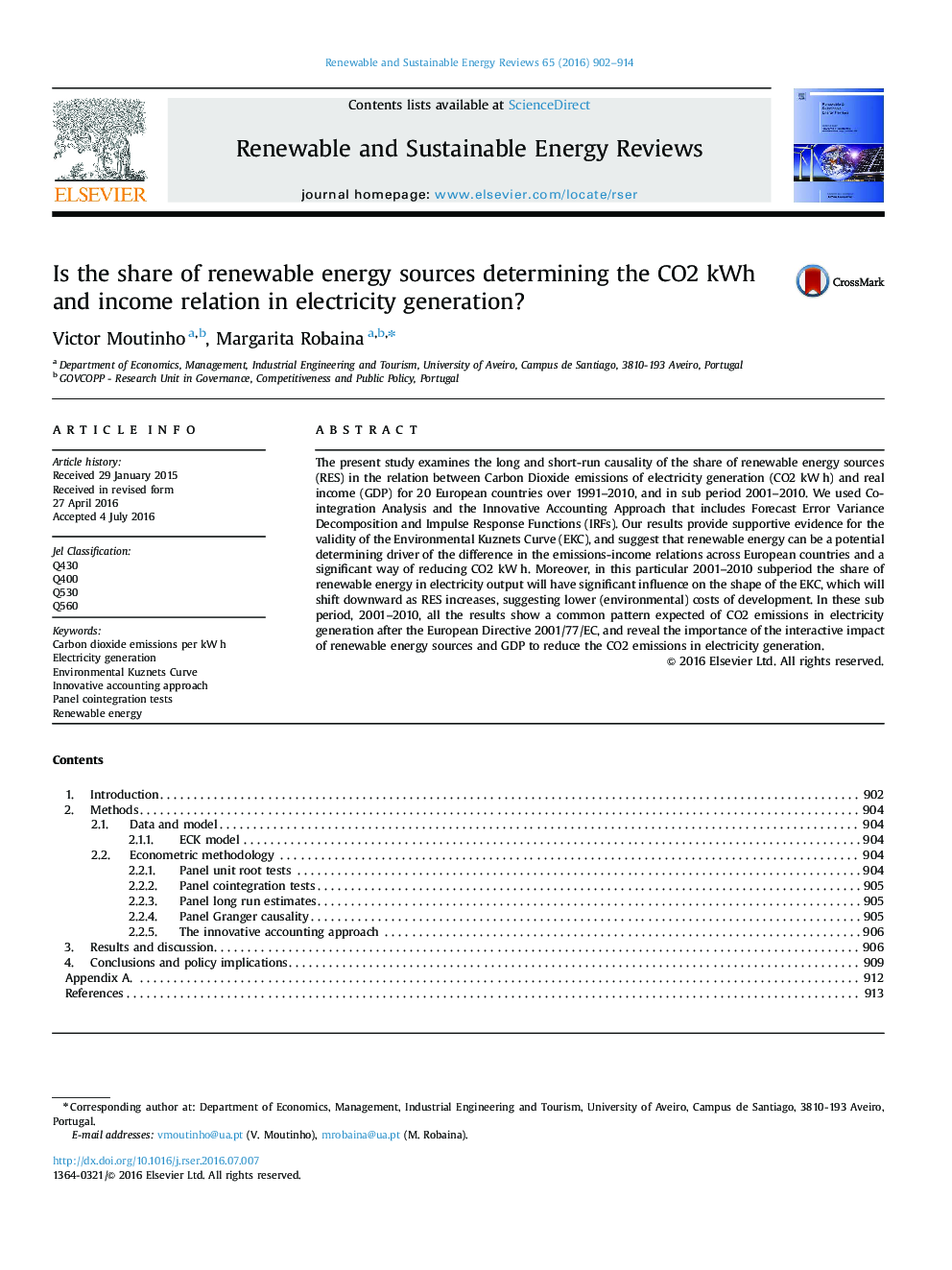| Article ID | Journal | Published Year | Pages | File Type |
|---|---|---|---|---|
| 8113090 | Renewable and Sustainable Energy Reviews | 2016 | 13 Pages |
Abstract
The present study examines the long and short-run causality of the share of renewable energy sources (RES) in the relation between Carbon Dioxide emissions of electricity generation (CO2 kWÂ h) and real income (GDP) for 20 European countries over 1991-2010, and in sub period 2001-2010. We used Cointegration Analysis and the Innovative Accounting Approach that includes Forecast Error Variance Decomposition and Impulse Response Functions (IRFs). Our results provide supportive evidence for the validity of the Environmental Kuznets Curve (EKC), and suggest that renewable energy can be a potential determining driver of the difference in the emissions-income relations across European countries and a significant way of reducing CO2 kWÂ h. Moreover, in this particular 2001-2010 subperiod the share of renewable energy in electricity output will have significant influence on the shape of the EKC, which will shift downward as RES increases, suggesting lower (environmental) costs of development. In these sub period, 2001-2010, all the results show a common pattern expected of CO2 emissions in electricity generation after the European Directive 2001/77/EC, and reveal the importance of the interactive impact of renewable energy sources and GDP to reduce the CO2 emissions in electricity generation.
Keywords
Related Topics
Physical Sciences and Engineering
Energy
Renewable Energy, Sustainability and the Environment
Authors
Victor Moutinho, Margarita Robaina,
